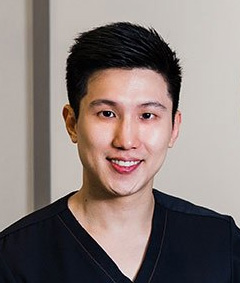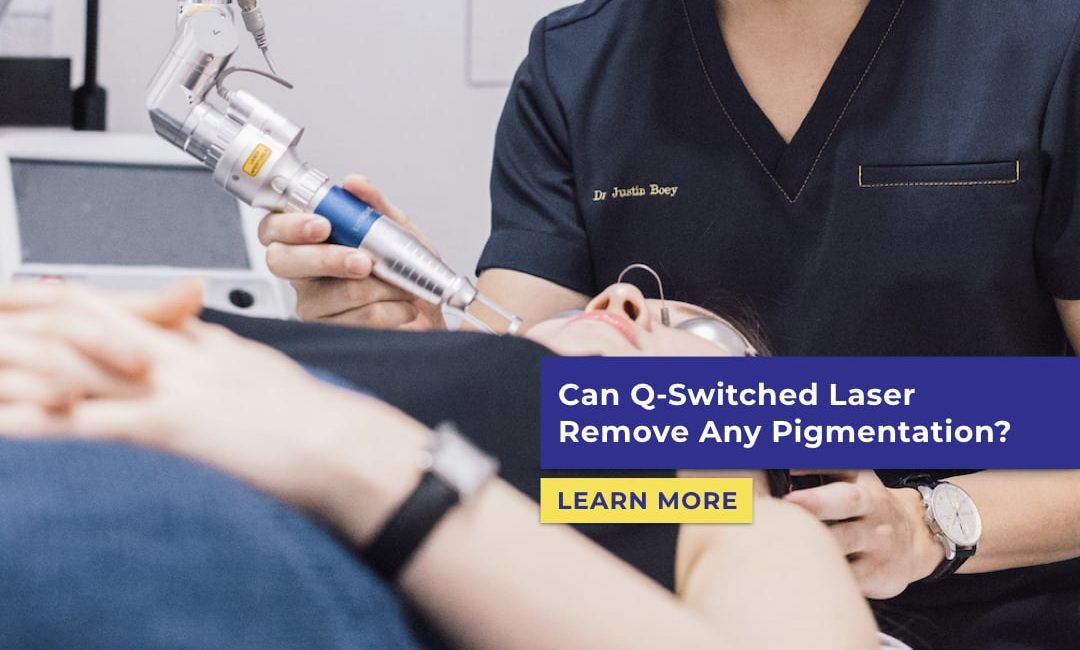Laser Pigmentation Removal is a treatment that can even help improve the appearance of challenging skin pigmentation such as freckles, melasma, and post-inflammatory hyperpigmentation. These treatments work by using high energy light, which is converted into heat energy to target damaged cells. The laser energy absorbed by the cells are what causes the breakdown of the melanin pigment particles.
Clear, spotless skin is the hallmark of beauty and youth.
There are many different types of pigmentation. Pigmentation is caused by an oversupply of melanin in an area of skin. This could be due to natural inborn factors or external causes such as sun exposure.
It is not uncommon nowadays to consider a “Q-switched laser package” as part of a personal grooming routine.
Contents
- 1 What exactly is a “Q-switched Laser”?
- 2 Is Q-switch Laser effective in achieving flawless skin?
- 3 What types of pigmentation are easy to remove?
- 4 The challenging cases – Melasma
- 5 Pico Lasers: New generation of pigment-removing Lasers
- 6 The Difference Between Picoplus, PicoWay, and Picosure Laser Pigmentation
- 7 Is a Pico laser better than Q switched laser for pigment removal?
- 8 Fewer laser treatment sessions needed when using Pico Lasers
- 9 Pico Lasers are able to treat stubborn and challenging cases that Q-switch Lasers cannot
- 10 Does Pico Lasers make Q-switched nanosecond lasers obsolete?
What exactly is a “Q-switched Laser”?
A “Q-switched Nd: YAG laser” is one of the most common lasers which removes excess pigments.
The laser beams in nanosecond pulses break down excess pigmentation, which is slowly removed by your body’s immune system.
It can range from $50 to even $500 per laser session.
Is Q-switch Laser effective in achieving flawless skin?
Yes, it is. But only for some people. This is because there are different types of pigmentation issues which vary in terms of difficulty to remove.
What types of pigmentation are easy to remove?
Freckles
Freckles are small brown marks that usually appear on sun-exposed areas. Usually removed with 2-4 sessions of Q-switched laser.
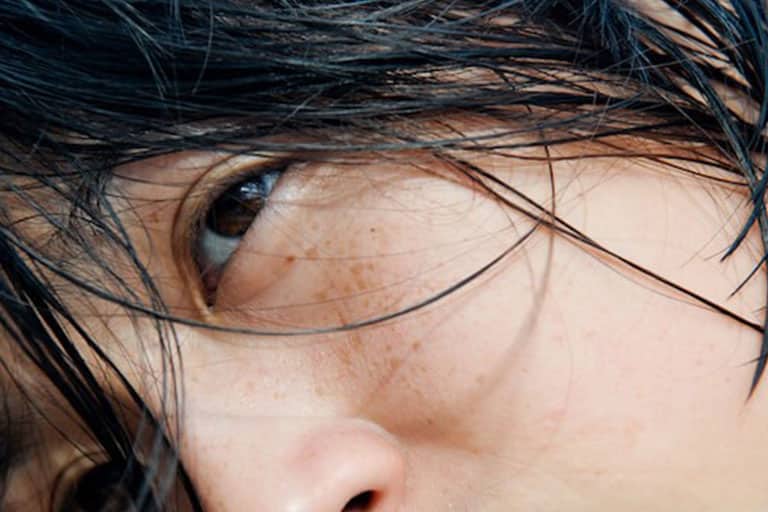
Solar Lentigos
Solar lentigos, also known as sun or age spots, on the other hand, are larger and have more defined outlines compared to freckles. They usually arise in middle age and appear on sun-exposed areas such as the face, arms and hands.
Usually removed with 2-4 sessions of Q-switched laser.

Post-Inflammatory Hyperpigmentation
Post-inflammatory hyperpigmentation is seen after skin injury, infection, or inflammation (e.g. Acne, Eczema) to the skin.
It can be temporary lasting a couple of months or may become a permanent feature on your skin.
Usually, 3-5 sessions of Q-switched laser are required.

The challenging cases – Melasma
Unfortunately, Melasma may never be fully removed with Q-switched lasers despite multiple sessions as well as skin whitening creams.
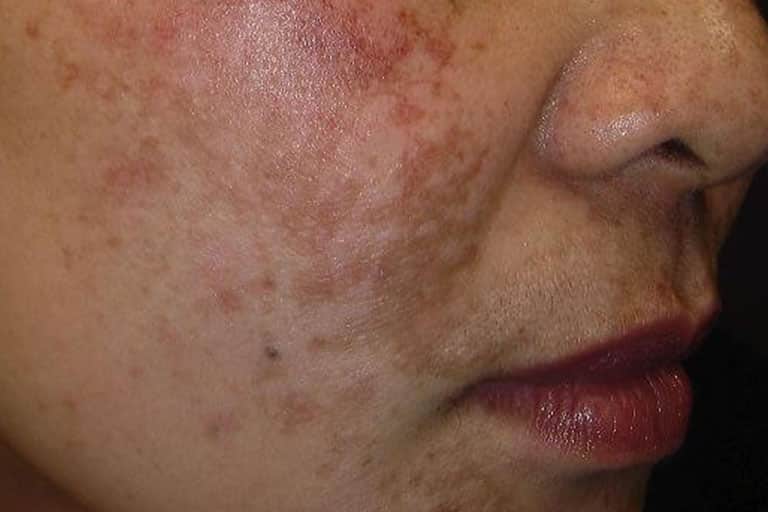
Melasma
Melasma results in symmetrical, brownish patches on the face. It is more common in women and also in darker skin types. It is caused by a variety of factors such as:
- Sun exposure
- Pregnancy
- Hormonal treatments or imbalances
Due to the unique nature of melasma, it is more difficult to treat compared with most other types of pigmentation. It can be slow to respond to treatment and may need more sessions before lightening effects are observed. Once treatment is discontinued, melasma may still return.
There are 2 options:
- Stop Laser treatments & Creams – risk relapse of Melasma
- Continue with monthly Q-switched lasers indefinitely to keep partially treated melasma in check
Neither options are ideal.
Option 1: wasted time, effort and money when there is a relapse of melasma
Option 2: on-going effort and money just to maintain results. Laser treatment sessions can cost a monthly expenditure of easily $200/session upwards.
Pico Lasers: New generation of pigment-removing Lasers
In 2016, the Picosecond Laser technology was approved for removal of pigments. It is an improved technology from traditional Q-switched Lasers which fire laser beams in the nanosecond (billionth of a second) duration.
Picosecond lasers are approximately 10 times faster than nanosecond Q-switched lasers.
The Difference Between Picoplus, PicoWay, and Picosure Laser Pigmentation

PicoPlus, PicoWay, and PicoSure are three different brands of Picosecond lasers. They are laser pigmentation removal treatments that all have the same goal of improving the appearance of skin pigmentation. They have their differences in terms of their pulse duration, wavelength, peak power, and manufacturer.
PicoPlus
PicoPlus is a second-generation picosecond laser that uses 4 wavelengths and has the highest peak power of 1.8GW. Similar to PicoWay, it uses Nd: YAG to create laser beams while PicoSure uses Alexandrite. It has a wide-range and precise controllable fluence to remove stubborn pigmentation efficiently. PicoPlus produces a shorter pulse width, which allows the device to precisely target pigments with less heat spreading on the surrounding tissues.
Picosure
Picosure is the first Picosecond Laser cleared by the FDA. It features a Focus Lens Array which allows lasers to treat wrinkles, loose skin, scars, and rejuvenate the skin. It also uses 2 wavelengths of 785nm. Picosure uses a technology that will enable it to deliver ultra-short picosecond pulses of energy to remove even difficult tattoo ink colours such as green and blue. Its width is 100x shorter than nanosecond technology, meaning it can shatter specific targets without damaging the surrounding skin.
PicoWay
Just like PicoPlus, PicoWay uses Nd: Yag for producing its laser beams. It is first known for its ability to remove tattoo and skin pigmentation, but now it’s also being used on acne scars and wrinkles. PicoWay has the shortest pulse duration among all the picosecond laser treatments. It uses photo-acoustic energy to treat scars, dark pigments, wrinkles, and ink tattoos
Is a Pico laser better than Q switched laser for pigment removal?
Picosecond/ Pico Lasers was initially developed for removal of tattoo pigments (acquired pigments) but subsequently adapted for used in natural pigmentary conditions like melasma.
The second-generation Picosecond/ Pico Lasers like Lutronic PicoPlus from Korea were developed with the primary focus of treating natural pigmentary conditions like melasma.

Let’s understand the science behind pigment removal: high energy is required to shatter the pigment ink, which will then gradually be removed by your immune system.
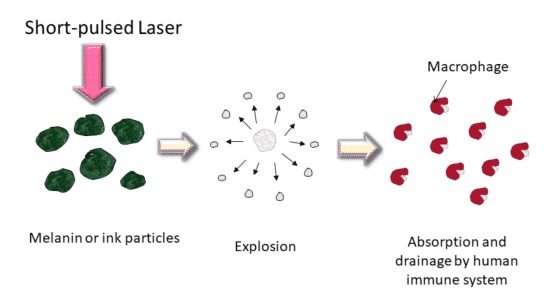
There were two problems with traditional pigmentation removal:
- Certain lasers do not have enough power to shatter stubborn pigment particles – hence the plateau in results of Melasma.
- Surrounding tissues might get damaged during the process of delivering Laser energy to shatter the pigmentation particles.
Picosecond/ Pico lasers solve these problems by emitting laser beams in shorter picosecond pulses. This means that there is less time for surrounding tissue to be damaged by heat from each laser beam. Hence, pigment removal treatments using a Picosecond/ Pico Laser are safer with lower risks of side-effects like hyperpigmentation. Compared to the older nano-second lasers, Picosecond/ Pico lasers are also able to deliver higher energy laser beams to shatter these pigments more effectively.

Fewer laser treatment sessions needed when using Pico Lasers
A top Taiwanese Dermatology research centre conducted a split-face, head-to-head research study between a pico laser versus a Q-switched laser which proved that a pico laser gives better results, which means fewer number of treatment sessions required to achieve best results.
In my clinical practice, I have observed that Pico lasers achieve results approximately twice as quickly which means fewer treatment sessions.
Pico Lasers are able to treat stubborn and challenging cases that Q-switch Lasers cannot
Q-switched lasers alone may not be enough to get rid of stubborn pigmentation. A study showed that Picosecond/Picolaser Treatments showed better results in treating melasma, a challenging skin pigmentation disorder. Pico laser is measured by pico seconds, while Q-switch lasers are measured by nano seconds. The technology of pico laser shatters pigments into much smaller fragments compared to Q-switch; this allows the body to get rid of stubborn pigmentation at a faster rate.
Pico Lasers works by using laser energy that puts pressure to squeeze cells, this activate natural cells to trigger production of collagen and elastin without damaging the skin’s surface.
Does Pico Lasers make Q-switched nanosecond lasers obsolete?
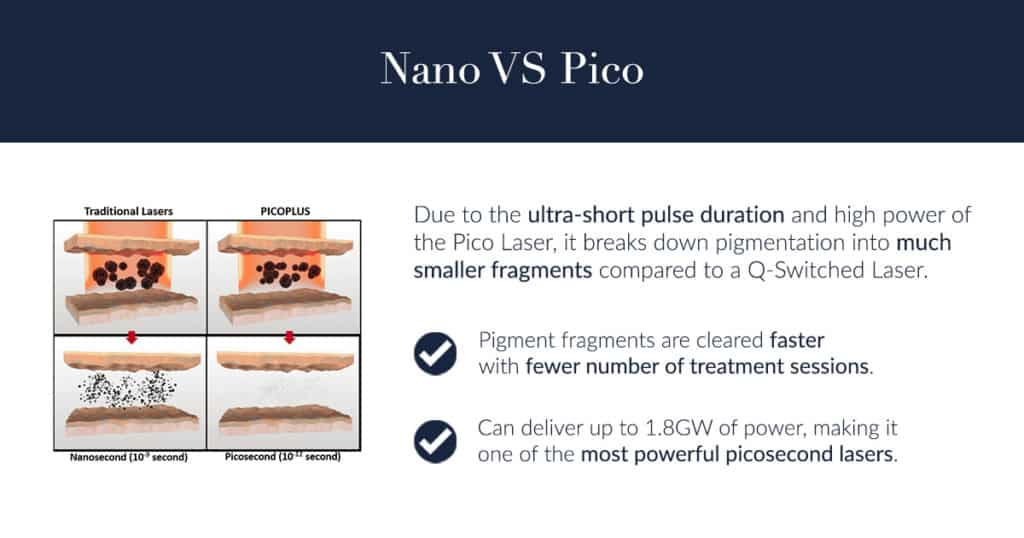
Well, both yes and no.
Pico Lasers are used to remove difficult pigments/tattoos that cannot be removed by Nanosecond Lasers.
In one Korean research study, nanosecond lasers can be used to shatter large pigments into smaller fragments first.
Subsequently, Pico lasers are used to shatter these smaller fragments into tiny fragments that are more easily removed by your immune system.

I personally use both picosecond and nanosecond modes to provide optimal results for complex melasma. This is a laser treatment protocol that was innovated by top Korean laser dermatologists.

Amongst the first group of doctors from Singapore to be trained in Lutronic PicoPlus, a US FDA-approved multi-wavelength second-generation pico laser, I constantly exchange clinical pointers with leading Korean laser dermatologists to ensure that my patients get the best results from this market-leading laser.
Have questions or need advice? Feel free to WhatsApp or email me below. I enjoy discussing about aesthetics so text me anytime!
